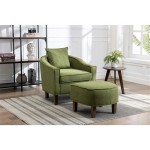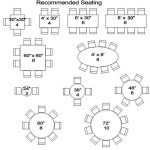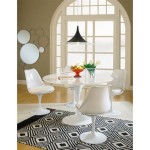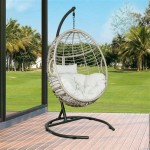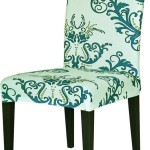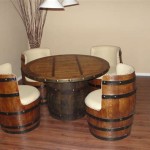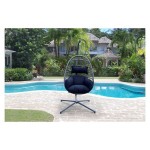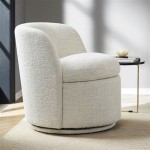The Enduring Appeal of Writing Desk Chairs Without Wheels
The selection of appropriate furniture plays a critical role in establishing a productive and comfortable workspace. Among the myriad options available, the writing desk chair without wheels presents a compelling alternative to its more mobile counterpart. While wheeled chairs have become ubiquitous in modern offices, the stationary nature of a chair without wheels offers a unique set of advantages often overlooked in favor of convenience. This article explores the benefits, design considerations, and practical applications of writing desk chairs without wheels, highlighting their suitability for various environments and tasks.
The inherent stability of a chair lacking wheels forms the foundation of its appeal. Mobility, while advantageous in some settings, can introduce distractions and contribute to postural instability. A fixed chair promotes a more grounded and focused experience, encouraging the user to maintain a consistent posture and minimize unnecessary movements. This can be particularly beneficial for tasks that require precision, concentration, and prolonged periods of focused attention. The absence of wheels also eliminates the potential for accidental rolling, which can be hazardous in crowded spaces or on uneven surfaces.
The design of writing desk chairs without wheels often prioritizes simplicity and elegance. These chairs are frequently crafted with clean lines and understated aesthetics, making them well-suited for traditional or minimalist environments. The focus shifts from complex mechanisms and adjustable features to essential comfort and ergonomic support. This streamlined approach can result in a more aesthetically pleasing and less visually cluttered workspace.
Enhanced Stability and Focus
The primary advantage of a writing desk chair without wheels lies in its enhanced stability. This stability translates directly into improved focus and concentration. When seated in a stationary chair, the user is less likely to fidget or unconsciously move around, allowing for a more sustained period of attention on the task at hand. This is particularly relevant for activities such as writing, reading, drawing, or any task requiring intricate hand movements. The fixed base provides a solid foundation, promoting a sense of groundedness and minimizing distractions. This stability also contributes to a more consistent ergonomic posture, reducing the risk of strain or discomfort associated with frequent adjustments or uncontrolled movements.
Furthermore, the absence of wheels eliminates the possibility of inadvertently rolling away from the desk. This can be a significant advantage in smaller spaces or when working with delicate materials that could be easily knocked over. The user can maintain a consistent distance from the work surface, optimizing posture and minimizing the need to constantly readjust their position. This is especially important for individuals who spend several hours a day at their writing desk.
The stability provided by a chair without wheels can also be beneficial for individuals with certain physical limitations. People with balance issues or those recovering from injuries may find the fixed base more secure and reassuring than a chair with wheels. The absence of rolling eliminates the risk of unexpected movements, providing a greater sense of control and confidence.
Aesthetic Versatility and Design Considerations
Writing desk chairs without wheels offer a wide range of aesthetic options, making them adaptable to various interior design styles. From classic wooden designs to modern minimalist creations, these chairs can seamlessly integrate into any workspace. The absence of complex mechanisms allows for a greater emphasis on materials, craftsmanship, and overall design aesthetics. This versatility makes them a popular choice for individuals who prioritize visual harmony and a cohesive workspace environment.
Traditional designs often feature solid wood construction with intricate carvings and upholstered seats. These chairs evoke a sense of timeless elegance and are well-suited for classic or formal settings. Modern designs, on the other hand, tend to embrace clean lines, minimalist forms, and contemporary materials such as metal, molded plastic, or mesh. These chairs are ideal for creating a sleek and uncluttered workspace.
Ergonomic considerations remain paramount in the design of writing desk chairs without wheels. While the absence of adjustable features may seem limiting, careful attention is paid to the seat height, back support, and overall chair dimensions. The goal is to provide optimal comfort and support for extended periods of sitting. Many designs incorporate lumbar support to promote proper spinal alignment and reduce back pain. The seat itself may be contoured to distribute weight evenly and minimize pressure points. The selection of appropriate upholstery materials is also crucial for ensuring breathability and long-lasting comfort.
The choice of materials plays a significant role in the overall aesthetic and durability of the chair. Wood, metal, and various synthetic materials each offer unique advantages. Wood provides a warm and natural aesthetic, while metal offers strength and durability. Synthetic materials can be molded into complex shapes and are often resistant to stains and wear. The selection of materials should be based on both aesthetic preferences and practical considerations, such as budget and intended use.
Practical Applications and Environmental Suitability
Writing desk chairs without wheels find application across a diverse range of environments, from home offices to libraries to classrooms. Their stability, aesthetic versatility, and ergonomic considerations make them well-suited for a variety of tasks and settings. The choice of chair will ultimately depend on the specific needs and preferences of the user, as well as the overall design of the workspace.
In home offices, a writing desk chair without wheels can create a dedicated and focused workspace. The absence of mobility encourages a more intentional approach to work, minimizing distractions and promoting concentration. The chair can be paired with a traditional writing desk or a more modern workstation, depending on the individual's aesthetic preferences. The selection of appropriate upholstery and materials can enhance the overall comfort and visual appeal of the home office environment.
Libraries and reading rooms often benefit from the stability and quietness of chairs without wheels. The fixed base prevents accidental movements and minimizes noise, creating a more conducive environment for focused reading and study. These chairs are typically designed for comfort and durability, with features such as lumbar support and generously padded seats. The aesthetic of the chairs should complement the overall design of the library, creating a harmonious and inviting space for readers.
Classrooms can also benefit from the use of writing desk chairs without wheels, particularly in situations where students are expected to remain seated for extended periods. The stability of the chairs can help to maintain order and minimize distractions. The design of the chairs should prioritize ergonomic considerations, ensuring that students are comfortable and supported throughout the school day. Durable materials and construction are essential for withstanding the rigors of daily classroom use.
Beyond these common applications, writing desk chairs without wheels can also be found in drafting studios, art studios, and other environments where precision and stability are paramount. The fixed base provides a solid foundation for detailed work, minimizing the risk of errors or accidents. The design of the chairs should be tailored to the specific needs of the user, taking into account factors such as seat height, back support, and the type of work being performed.
In summary, the writing desk chair without wheels offers a compelling alternative to its wheeled counterpart. Its enhanced stability, aesthetic versatility, and practical applications make it a valuable addition to any workspace. By carefully considering the design considerations and environmental suitability, individuals can select a chair that promotes focus, comfort, and productivity.

Pami Armless Office Desk Chair No Wheels Fabric Padded Modern Swivel Height Adjustable Wide Seat Computer Task Vanity For Home Mid Back

Swivel Vanity Chair With Back For Girls Kids Bedroom No Wheels Makeup Cute Bow Backrest Pink And White

Grandnoor Mid Century Modern Swivel Accent Chair With Solid Wood Legs Home Office Desk No Wheels Makeup For Vanity Upholstered

Armless Chair Desk Chairs West Elm

Armless Office Desk Chair No Wheels

32 Best Desk Chairs With No Wheels For Your Office

White Velvet Accent Chair Adjustable Swivel Office Armless No Wheels For Study Living Room Walmart Com

15 Best Desk Chairs With No Wheels Woman S World

10 Best Desk Chairs Without Wheels For A Sleek Office Look Mige Furniture Factory

Strong The Best Desk Chairs With No Wheels
